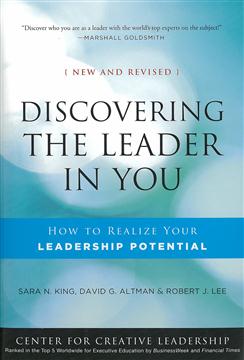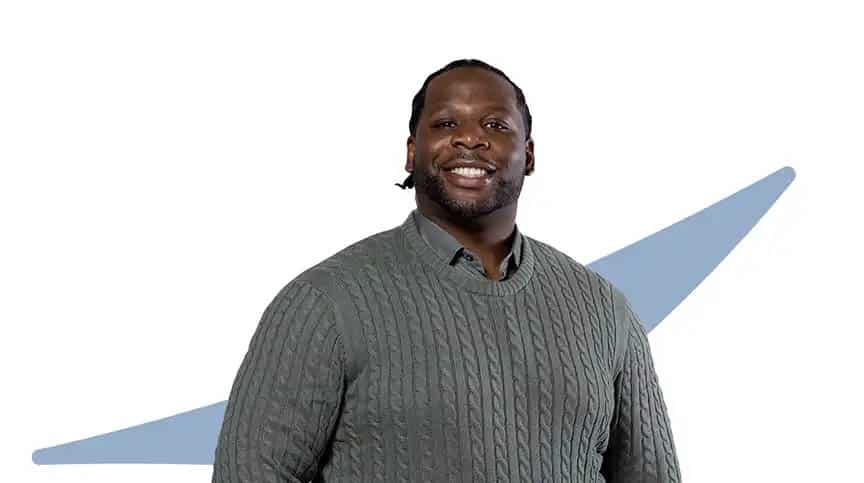Great leaders are often seen as outward-facing — communicating and influencing others as they drive an organization to success.
While communication and influence are 2 of the “Fundamental 4” core leadership skills identified in our research, the other 2 — learning agility and self-awareness — are more inward-focused.
What is self-awareness exactly?
Self-awareness occurs when you’re aware of different aspects of yourself, including strengths, weaknesses, personality traits, behaviors, anxieties, and emotions. It can be the most challenging of the fundamental skills to develop, but it can also serve as a foundation for strengthening all your other leadership skills.
Research has repeatedly found that leader effectiveness is constrained or amplified by self-awareness, and it varies based on how well leaders understand themselves, how others view them, and how they navigate the resulting interactions.
Ready to increase your self-awareness? Here’s how.
Increasing Your Self-Awareness
Use the Johari Window for Building Self-Awareness
Before you can begin increasing your self-awareness, it’s helpful to understand the differences in how you see yourself vs. how others see you. The Johari Window is a constructive, research-based tool that helps you organize your self-awareness into a 2-by-2 grid, with the 4 parts representing what is known and unknown about you to other people, and what is known and unknown about you to yourself:
- What is known about you to others is public.
- What is unknown about you to others is private.
- What is not known to you nor others is unknowable, and not very relevant.
- What is known about you by others, but not known to you, are your blind spots.
This represents perhaps the most interesting quadrant of all. When what others know about you that you didn’t recognize about yourself is revealed, and you feel blindsided to discover how others really see you, that has the potential to create dynamic, powerful change. The things you’re unaware that others know about you may prevent you from accurately assessing your own behaviors, emotions, anxieties, and performance.
While these moments are rare, they are precious gifts. And while the truth can hurt, it can also instruct. Our self-awareness is increased as we discover a truth about ourselves. A good leadership coaching provider can even help you identify your blind spots and make a plan for addressing them.
4 Key Facets of Self-Awareness
Increase Your Internal & External Self-Awareness
Before you can work on increasing your self-awareness, first know that it has 4 facets that are most critical for leaders:
- Leadership Wisdom: These are insights from your experience that you can apply to the challenges you face.
- Leadership Identity: This is who you are in your current professional and personal context.
- Leadership Reputation: This is how others perceive you as a leader based on your current and previous behavior.
- Leadership Brand: This is what you aspire to and the actions you take to support that mission.
Leadership Wisdom
The key to cultivating leadership wisdom is taking time to reflect on your experiences. The best leaders have a bank of lessons and anecdotes they can bring to bear on new challenges. These insights don’t arise spontaneously but are the result of ongoing practice.
This includes revisiting your experiences from multiple perspectives, engaging in “surface reflection” to identify past actions and behaviors, and practicing “deep reflection” to examine underlying beliefs, emotions, and assumptions.
This reflection must be done time and again, and good leaders often return to the same experiences repeatedly to gain new insights as they grow.
Leadership Identity
It’s critical to understand our own identity and how it shapes interactions with others. Your leadership identity influences how you lead, whether you’re aware of it or not. In fact, we all make assumptions about our own identity and that of others. Unfortunately, when we work together, assumptions are often treated as reality.
Think of your leadership identity as 3 concentric rings (which may overlap):
- In the outer ring is your given identity — characteristics you have no choice about. These natural traits include age, nationality, race, some physical characteristics, and the like.
- The second ring is your chosen identity. These traits describe your status, characteristics you control, and skills. Common attributes in the chosen identity are your occupation, political affiliation, and hobbies, among others.
- The innermost ring is your core identity. These are the qualities that make you unique; some may change over your life, while others remain constant. Included here are behaviors, values, and beliefs.
We use identity to categorize people into groups, identify with particular groups, and compare various groups. Knowing your leadership identity may help you find common ground with others and enhance your internal and external self-awareness, leading to stronger relationships or reducing the likelihood of misunderstandings during critical communications.
To put this into practice, use the following questions to work through your current assumptions about your own identity, as well as the identity of someone in your organization. For example:
- When you are building a relationship at work, what do you want to know about the other person? What do you notice first? Are you attracted to certain characteristics?
- What assumptions do you make about other people based on their social identity?
- If someone else were describing your identity, what do you think they would notice first? What would be most relevant to them, and why?
- What assumptions do you think other people make about you based on your social identity?
- How much do you think you have in common with others you work with?
Leadership Reputation
Knowing how you’re perceived will strengthen your ability to communicate with and influence others. Your leadership reputation is what others think of you as a leader. Understanding your leadership reputation helps you comprehend how you may be perceived and judged by others.
To understand your leadership reputation, ask questions about the reputation you’ve established and what emotions you evoke in the workplace; try to view your behavior as others may, and check to see if your reputation aligns with your values. This is key for authentic leadership, and you may learn that you have some work to do!
Leadership Brand
Bring to the surface, enhance, and polish your greatest strengths, and make sure you’re communicating them to people you encounter. How do people know the leadership you’re capable of, and how do you communicate it? That’s what your leadership brand is — an aspirational set of leadership traits and behaviors.
Understanding your leadership brand — how you’d like to be perceived — allows you to act to change those perceptions in a positive, authentic way. Your leadership brand should identify your unique strengths, communicate them to others, provide a consistent experience that meets others’ expectations of you, and make explicit that which is implicit.
A strong leadership brand can only be developed if you’re self-aware — you need to know what your leadership reputation is and have a deliberate plan for strengthening it to fuel your leadership aspirations.
For those leaders who work at it, greater internal and external self-awareness in these 4 areas will pay significant dividends.

Learn how to tackle the job of leadership by increasing self-awareness, bringing personal enthusiasm, vision, and constant energy.
Ready to Take the Next Step?
Increase your self-awareness (and strengthen the other “Fundamental 4” leadership skills that are key for all leaders) with our fundamental leadership skills program, Lead 4 Success®. Or, partner with us to increase self-awareness among leaders across your organization through our various leadership programs and Self-Awareness Training options.












